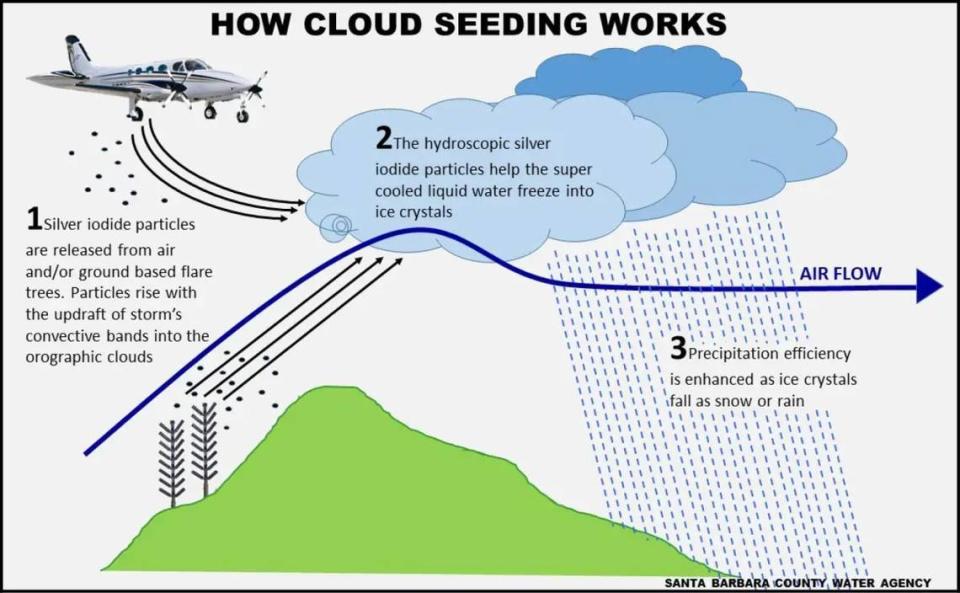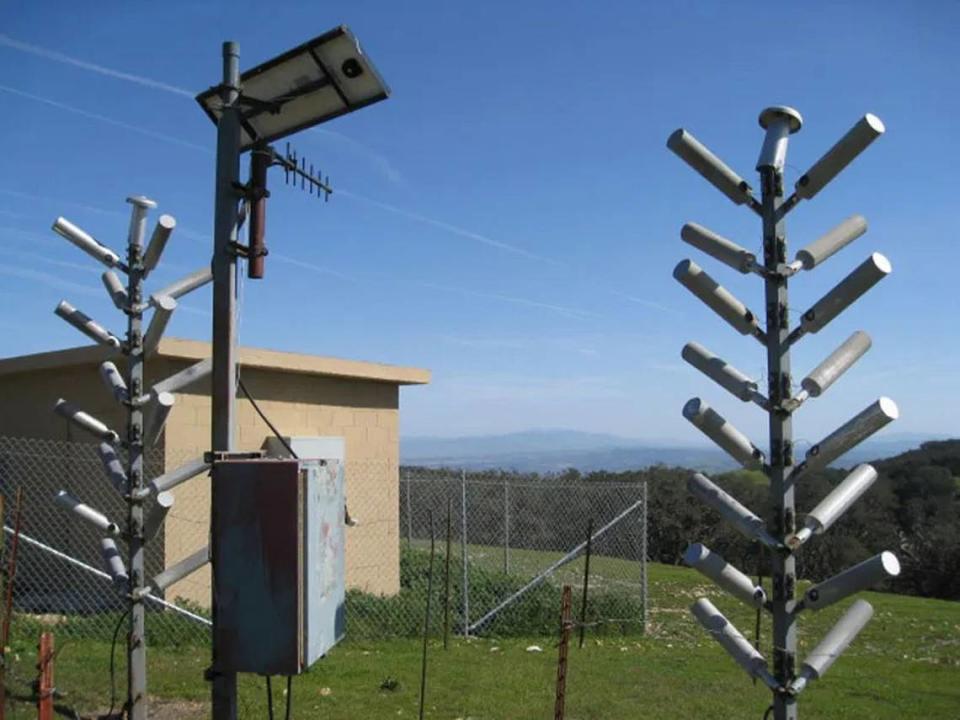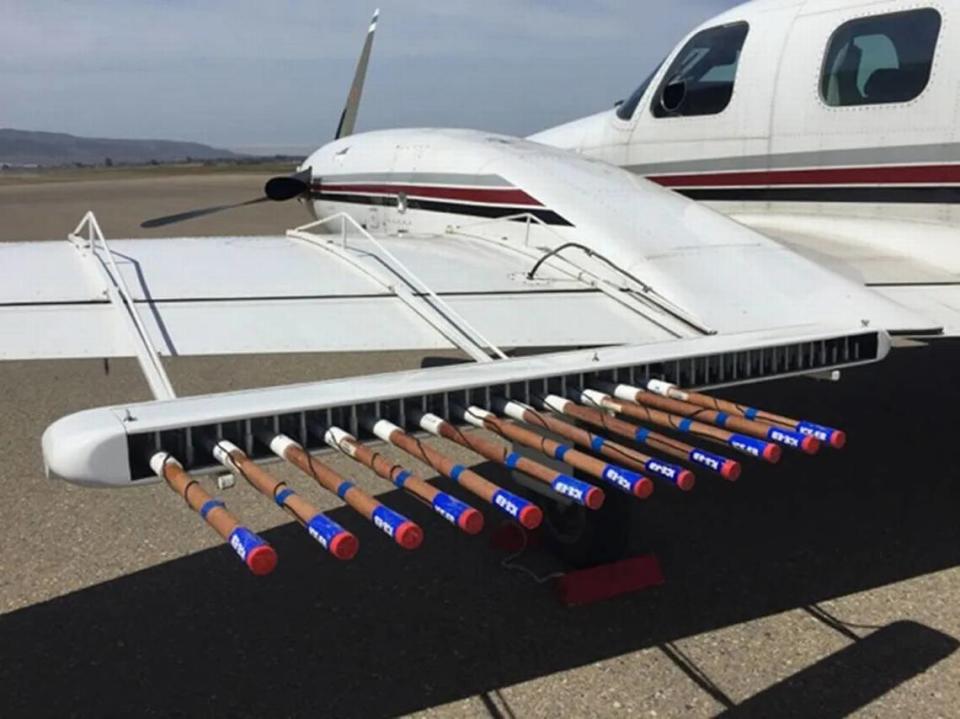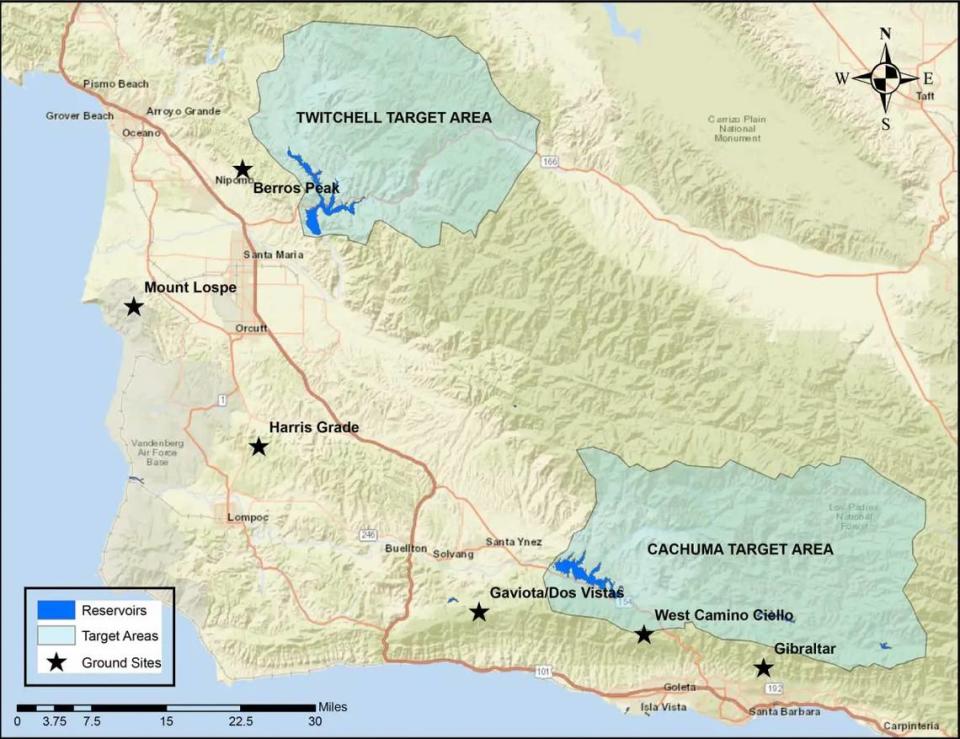‘Vitamins for the clouds.’ Santa Barbara County turns to cloud seeding to boost rainfall
Mother Nature can be fickle when it comes to delivering rainfall to Santa Barbara County, and sometimes she gets a technological nudge to deliver a bit more precipitation to help replenish local reservoirs.
That’s done through a process known as “cloud seeding,” and accomplished under a program overseen by the Santa Barbara County Water Agency.
“Any cloud seeding program is just enhancing rainfall,” Matt Scrudato, a senior hydrologist for the Water Agency, told Noozhawk. “It’s designed to make it rain more.”
Super-cooled water droplets or ice particles in storm clouds form on tiny bits of dust or dirt in the atmosphere to create raindrops. While most storms in the county contain abundant moisture, they often lack these bits, known as “condensation nuclei.”
Cloud seeding involves spraying silver iodide into the atmosphere — from the ground and from the air — to add condensation nuclei and boost rainfall, potentially by as much as 20%, Scrudato said.
“Cloud seeding injects artificial hydroscopic material into the convective bands and cloud mass, providing a mechanism to move the moisture from the cloud mass to the surface of the earth where it is needed,” according to the Water Agency’s website.

There are three ground-based cloud seeding sites along the ridge of the Santa Ynez Mountains — at Refugio Pass, on West Camino Cielo and on Gibraltar Road.
Additional sites — known as Automated High Output Ground Sites, or AHOGS — are at the top of Harris Grade near Lompoc, on Mount Lospe near Point Sal and Vandenberg Space Force Base near Lompoc and on Berros Peak east of Nipomo.
At these locations, specialized flares, which are similar in appearance to road flares, are used to spray out the silver iodide into passing storm clouds.
They are mounted on 15-foot metal structures that resemble a sparse Christmas tree, and are triggered remotely.

Conditions must be just right before the cloud-seeding stations are activated, Scrudato explained.
First off, “temperatures have to be really cold,” he said, in order for rain drops to form around the silver iodide from the super-cooled water vapor.
Additionally, wind direction is critical, as the hydrologists want to ensure that the enhanced rainfall occurs over parts of the watershed that drain into reservoirs such as Gibraltar Reservoir and Lake Cachuma along the Santa Ynez River, and Twitchell Reservoir east of Santa Maria.
The weather system needs the right amount of uplift to carry the silver iodide up into the clouds.

At the same time, cloud seeding will not be used near recent wildfire burn areas, where the extra runoff could add to flooding or debris-flow potentials, Scrudato said.
Likewise, it will be discontinued if streams are nearing flood stage, or if reservoirs are approaching their spill level.
While most of the local cloud seeding is done from ground-based sites, the program also makes use of a specially equipped airplane — a twin-engine Cessna 414 — to deliver silver iodide from the air.
“An old pilot used to refer to it as vitamins for the clouds,” Scrudato recalled.
The cloud seeding program, which has been operational since 1981, carries an annual price tag of about $370,000. It is operated by North American Weather Consultants under a contract with the county.

The county Water Agency foots half the bill, Scrudato said, with the remainder split up among nine local water purveyors, including those serving Carpinteria, Montecito, Santa Barbara, Goleta, the Santa Ynez Valley and Santa Maria.
Studies done in the 1970s and in past years estimated that cloud seeding has the potential to increase runoff into Lake Cachuma by about 20% and into Twitchell Reservoir by 10%, Scrudato said.
New studies are underway to gauge the effectiveness of the program, and allow meteorologists and hydrologists to fine-tune their efforts.
“We realize we need better numbers and better analysis of the program,” Scrudato said.
With this week’s storm, cloud seeding was not used at the outset, Scrudato said, because of high winds and less-than-ideal cloud formations.
“We did use the plane and some ground sites to seed the later portion of the storm,” he added.
Scrudato said the cloud seeding program has proven to be cost-effective, generating water for urban and agricultural uses for an estimated $80 per acre-foot, far less than other water sources.

